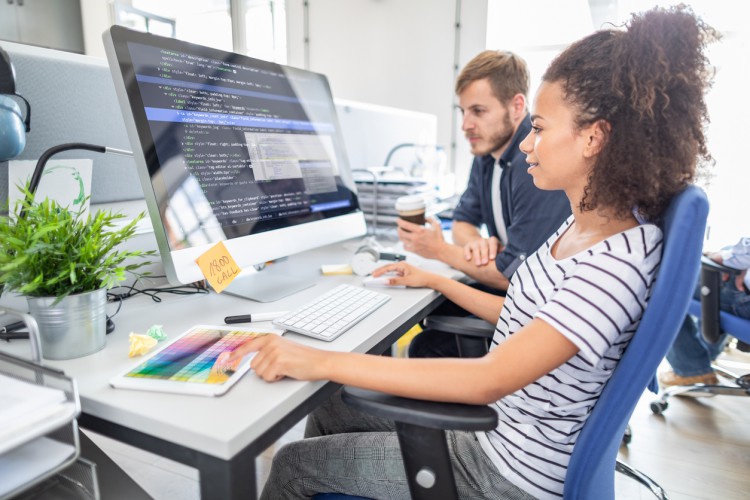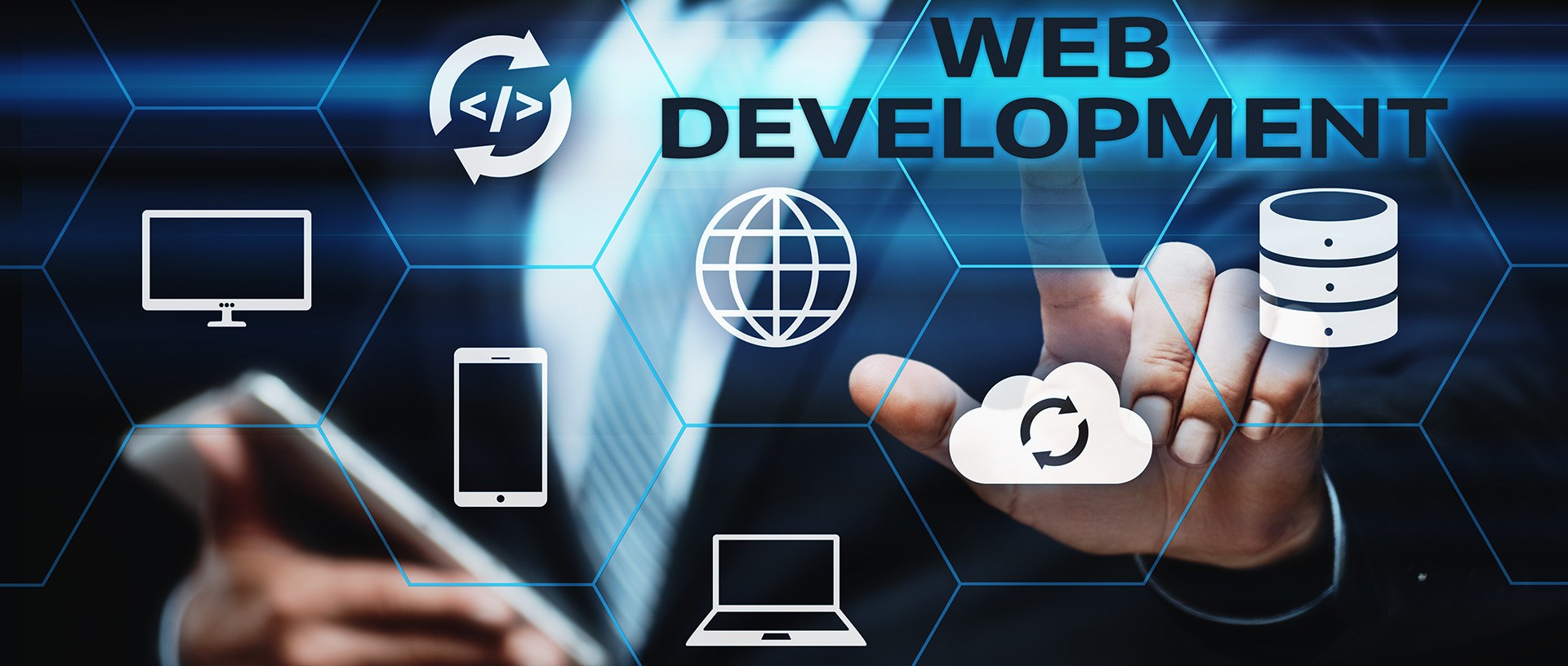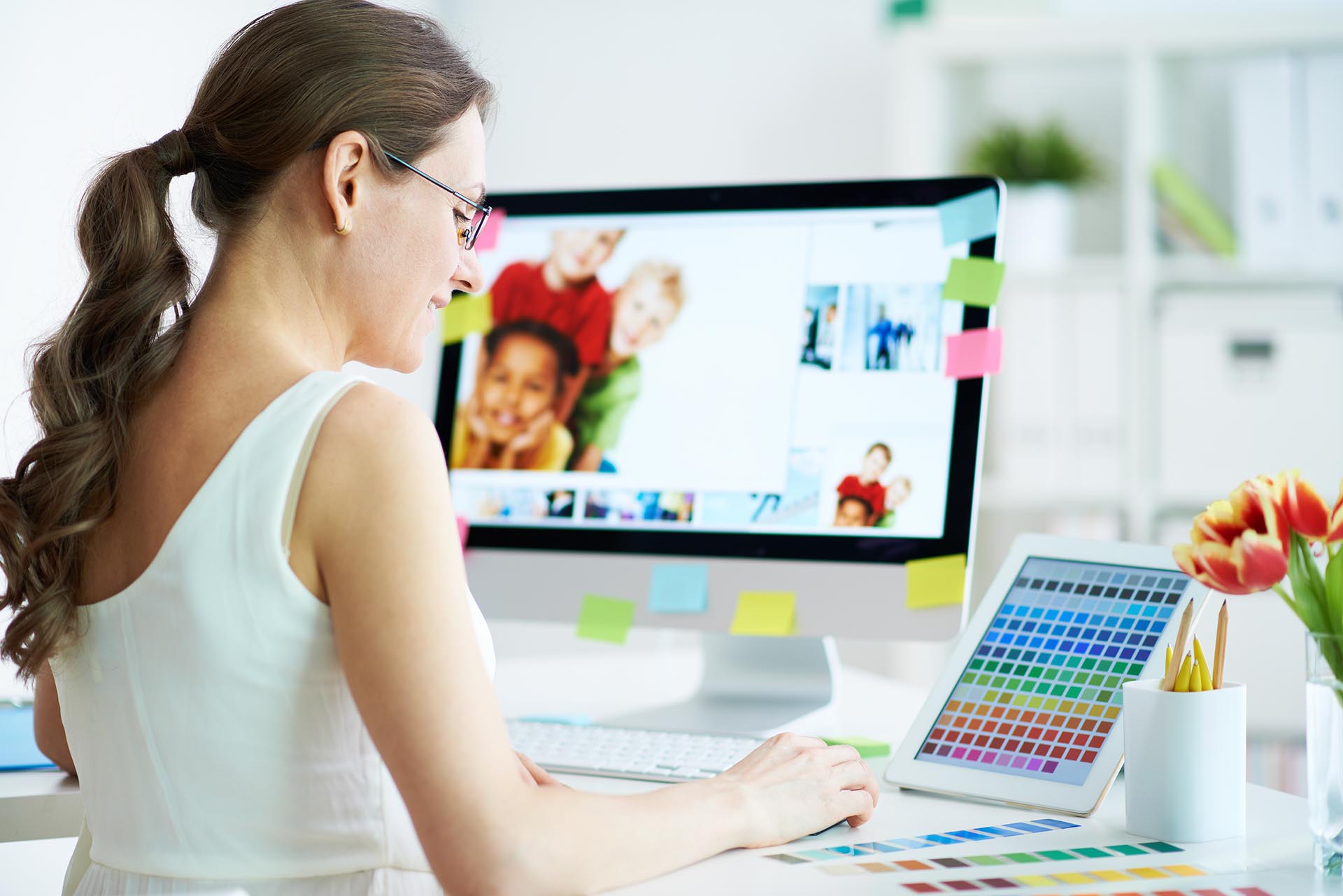The role of engaging visuals in web design for modern audiences
Discovering the Different Kinds Of Website Design and Their One-of-a-kind Benefits
The landscape of website design includes a selection of styles, each offering distinctive benefits that accommodate various customer demands. Minimalist and level styles emphasize clarity, while receptive and material designs boost flexibility across tools. Illustratory and typography-driven strategies intend to enhance involvement and emotional vibration. Understanding these varied kinds can significantly impact customer experience and brand name perception. What lies underneath the surface area of these style selections?
Minimalist Website Design

Minimal Web layout typically integrates a minimal shade combination and simple typography, which not just boosts visual appeals however likewise reinforces brand identity. The lowered complexity can lead to much faster loading times, further enhancing user complete satisfaction. Additionally, by minimizing aesthetic clutter, individuals can involve with material extra successfully, leading to enhanced understanding and retention. In general, minimal Web layout cultivates a seamless customer experience, making it a preferred selection for brand names aiming to convey quality and professionalism and reliability in their on the internet presence.
Receptive Website Design
Responsive website design has actually become crucial in today's electronic landscape, guaranteeing mobile compatibility for users across numerous devices. This technique substantially boosts user experience by offering seamless navigating and availability, no matter of screen size. As even more people access the Web on mobile phones and tablets, the relevance of responsive style continues to grow.

Mobile Compatibility Significance
As mobile phone use proceeds to climb, ensuring internet sites work with different display sizes has actually ended up being important for reliable communication and interaction. Mobile compatibility, frequently attained through receptive Web style, permits internet sites to adjust perfectly to mobile phones, tablets, and other devices. This adaptability not just reaches a wider audience but also improves brand name reputation. A website that works well on smart phones reflects professionalism and reliability and focus to customer requirements. Additionally, search engines focus on mobile-friendly sites in their positions, making compatibility a crucial element for on the internet exposure. By investing in mobile compatibility, businesses can boost their digital existence and satisfy the growing variety of individuals who access information on the move. Prioritizing mobile-responsive layout is critical in today's digital landscape.
Improved Individual Experience

Flat Design
Level design is a minimal strategy to website design that highlights simpleness and quality. By getting rid of three-dimensional aspects such as textures, slopes, and shadows, flat layout develops a visually attractive individual interface that prioritizes material and capability. This design promotes an intuitive navigating experience, as customers can swiftly recognize crucial functions and activities without distraction.
Among the main advantages of level design is its responsiveness throughout different gadgets and screen dimensions. Its straightforward formats and clean lines adapt flawlessly, making sure a constant experience for individuals on mobile, tablet, or desktop computer platforms. In addition, flat design commonly incorporates bold colors and typography, enhancing aesthetic impact and brand name recognition.
The simplicity fundamental in level layout leads to much faster loading times, which contributes favorably to individual satisfaction. In general, level layout continues to be a popular selection for modern Web development, lining up with modern visual choices while providing excellent usability
Material Layout
Material Layout represents a layout language created by Google that concentrates on developing a intuitive and cohesive user experience throughout electronic systems. This method stresses making use of grid-based designs, receptive animations, and deepness results such as lights and darkness, which assist to develop a sense of pecking order and spatial connections. By mimicking the physical globe, Material Design allows customers to engage with digital user interfaces in a more all-natural and interesting manner.
Among the crucial benefits of Material Layout is its flexibility across different devices and display dimensions, making certain a constant experience for customers. Furthermore, it advertises a clear visual language that boosts functionality, making it simpler for individuals to navigate intricate applications. The consolidation of vibrant shades and bold typography likewise plays a necessary role in attracting attention to crucial elements, thus enhancing total individual interaction - web development. Material Design has actually ended up being a prominent choice among developers looking for to create practical and aesthetically attractive internet sites.
Typography-Driven Style
Typography-Driven Layout concentrates on the critical use kind to improve the useful and visual elements of an internet site. This layout strategy prioritizes typefaces, font dimensions, spacing, and hierarchy to create visual rate of interest and overview user experience. By carefully selecting typography, designers can convey brand name identification and stimulate feelings, making the material more interesting and easily accessible.
Effective typography boosts readability and usability, making sure that customers can quickly take in and browse the website information. The best mix of kind can likewise develop a clear aesthetic go to my blog power structure, allowing users to quickly recognize key messages and contacts us to action.
A typography-driven approach can be adapted to various devices, guaranteeing consistency throughout platforms. This versatility is crucial in today's multi-device landscape, where individual experience is paramount. Inevitably, Typography-Driven Style offers not only as an artistic option but likewise as a useful aspect that substantially affects an internet site's effectiveness.
Illustratory Website Design
Illustratory Web style utilizes visual storytelling strategies that can greatly boost customer interaction. By incorporating special pictures, internet sites can produce a remarkable brand name identity that reverberates with their audience. This approach not only captivates site visitors but additionally communicates messages in a visually engaging manner.
Visual Narration Strategies
A wide range of Web developers use aesthetic storytelling techniques to develop immersive and engaging user experiences. This method combines design, typography, and imagery to tell a tale that reverberates with customers on a psychological degree. By incorporating engaging visuals, developers can properly share messages and evoke sensations, leading site visitors via a brand name's trip. Infographics, computer animations, and interactive elements offer to improve stories, making complex details a lot more unforgettable and obtainable. Furthermore, visual storytelling can develop a natural brand identity, as consistent imagery and motifs reinforce core values and messages. Inevitably, this technique not only astounds customers but likewise fosters a deeper link with the web content, encouraging exploration and retention. With experienced application, visual storytelling transforms standard Web experiences into significant and vibrant communications.
Enhancing User Engagement
Effective website design greatly enhances user engagement by leveraging illustrative components that attract focus and foster communication. Pictures can streamline complicated principles, making them extra unforgettable and friendly for customers. They damage the monotony of text-heavy pages, developing aesthetic breaks that invite exploration. Additionally, unique pictures can stimulate emotions, motivating customers to get in touch with the content on a much deeper degree. Interactive components, such as animations or float results, can also improve involvement by welcoming individuals to take part proactively as opposed to passively eating details. This method not just keeps visitors on the site longer but likewise raises the chance of return check outs. Eventually, effective illustrative website design changes the customer experience, making it more satisfying and impactful.
Branding Through Illustration
Aesthetic elements play a substantial function in Homepage shaping a brand's identity, and images are an effective device in this regard. Illustrative website design allows brands to communicate their unique character and worths via custom-made artwork. This technique promotes a deeper emotional link with the audience, enhancing memorability and engagement. By integrating images, brand names can differentiate themselves in a congested industry, developing a distinctive visual narrative that resonates with their target demographic. Furthermore, illustrations can simplify complex ideas and make web content much more obtainable, efficiently communicating messages in an appealing way. Overall, branding with picture not only improves the user experience but additionally enhances brand acknowledgment, making it a beneficial technique for businesses aiming to develop a strong online existence.
Regularly Asked Questions
How Do I Pick the Right Web Layout Kind for My Business?
To select the appropriate website design kind for a business, one ought to examine goals, target market, and market requirements. Evaluating customer experience and performance will direct the option process for perfect engagement and effectiveness.
What Tools Are Best for Creating Different Web Design Styles?
Popular devices for producing varied Web layout styles consist of Adobe XD, Figma, Map Out, and WordPress. Each offers unique features tailored to different layout needs, allowing developers to build visually attractive and useful sites efficiently.
Just How Much Does Expert Web Style Generally Cost?
Specialist website design generally sets you back between $2,000 and $10,000, depending on complexity, functions, and developer proficiency. Custom remedies and continuous upkeep may boost costs, while themes can offer even more budget-friendly options for simpler jobs.
Can I Incorporate Multiple Website Design Types Efficiently?
Yes, incorporating multiple website design kinds can be reliable. By integrating components from various styles, designers can develop distinct, appealing user experiences that cater blog to varied audiences while improving capability and aesthetic charm.
Just How Do Layout Patterns Effect Customer Experience and Interaction?
Layout fads significantly affect individual experience and engagement by improving aesthetic appeal, enhancing navigating, and fostering emotional connections - web development. Remaining upgraded with fads allows designers to create intuitive user interfaces that reverberate with customers and urge prolonged communications
Minimalist and flat layouts highlight clearness, while receptive and worldly styles improve convenience throughout gadgets. It may seem counterproductive, minimalist Web layout stresses simplicity to enhance user experience. Responsive Web design plays a necessary duty in enhancing user experience by guaranteeing that a website adjusts flawlessly to different display sizes and tools. Flat layout is a minimal technique to Web style that highlights simpleness and quality. Product Style stands for a layout language established by Google that concentrates on producing a intuitive and natural user experience throughout electronic platforms.